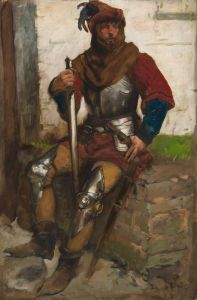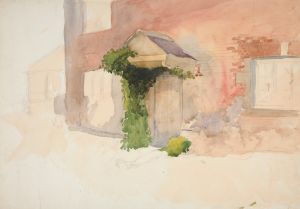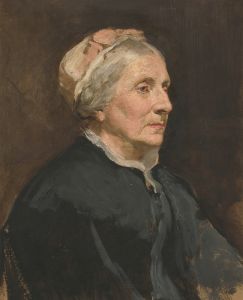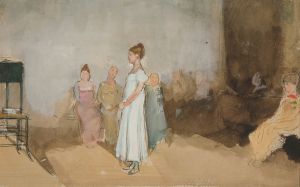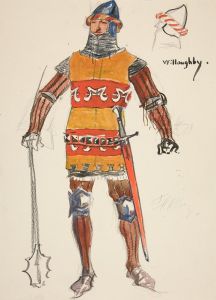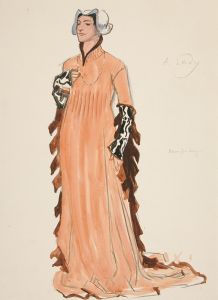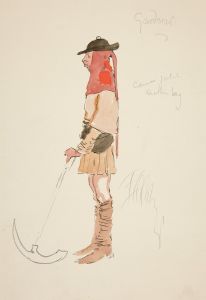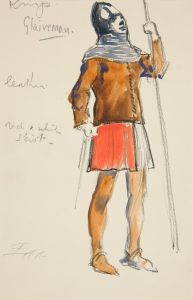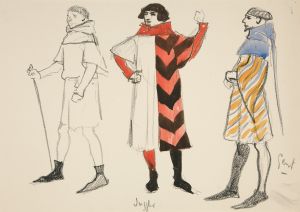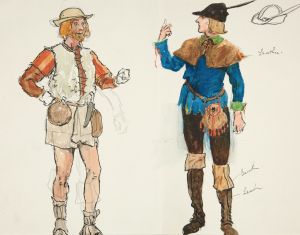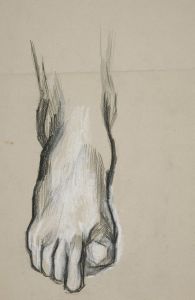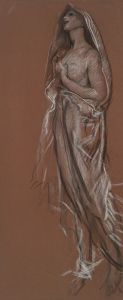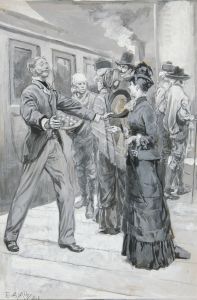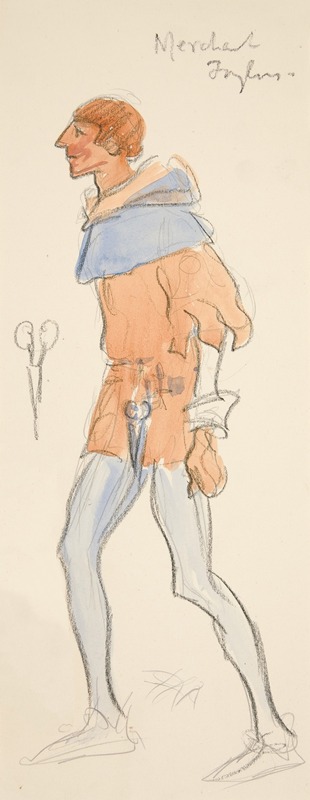
Merchant Taylor, costume sketch for Henry Irving’s Planned Production of King Richard II
A hand-painted replica of Edwin Austin Abbey’s masterpiece Merchant Taylor, costume sketch for Henry Irving’s Planned Production of King Richard II, meticulously crafted by professional artists to capture the true essence of the original. Each piece is created with museum-quality canvas and rare mineral pigments, carefully painted by experienced artists with delicate brushstrokes and rich, layered colors to perfectly recreate the texture of the original artwork. Unlike machine-printed reproductions, this hand-painted version brings the painting to life, infused with the artist’s emotions and skill in every stroke. Whether for personal collection or home decoration, it instantly elevates the artistic atmosphere of any space.
Edwin Austin Abbey was an American artist and illustrator known for his work in both the United States and England during the late 19th and early 20th centuries. He was particularly renowned for his historical and literary subjects, often drawing inspiration from Shakespearean plays. One of Abbey's notable contributions to the world of theater and art was his involvement in costume design for stage productions, including his work for Henry Irving's planned production of "King Richard II."
Henry Irving was a prominent English stage actor and manager during the Victorian era, celebrated for his innovative approaches to theater production and his dedication to elevating the status of the theatrical profession. Irving's interest in producing "King Richard II," a historical play by William Shakespeare, led him to collaborate with artists like Abbey to create visually compelling and historically informed stage designs.
The costume sketch for "Merchant Taylor" by Edwin Austin Abbey was part of this collaborative effort. Abbey's sketches were known for their attention to detail and historical accuracy, reflecting his deep research into the period's clothing and aesthetics. His work often involved studying historical texts, paintings, and artifacts to ensure that the costumes would be both authentic and visually striking.
In the context of "King Richard II," the Merchant Taylor character would have been one of the many figures populating the courtly and political landscape of the play. Abbey's sketch would have been intended to capture the essence of the character's role and status within the narrative, using clothing to convey information about social standing, occupation, and personality.
Abbey's involvement in Irving's production reflects the broader trend of the time towards more historically accurate and visually rich theatrical presentations. This movement was part of a larger Victorian fascination with history and authenticity, which influenced various aspects of culture, including literature, art, and theater.
While the specific details of the "Merchant Taylor" sketch are not widely documented, Abbey's work in general is characterized by its meticulous craftsmanship and artistic flair. His contributions to theater design were part of a larger body of work that included illustrations for books and magazines, as well as large-scale murals and paintings.
Abbey's legacy in the art world is significant, as he bridged the gap between illustration and fine art, and his work continues to be studied and appreciated for its technical skill and historical insight. His collaboration with figures like Henry Irving highlights the interdisciplinary nature of theatrical productions during the period, where artists, actors, and directors worked together to create immersive and engaging experiences for audiences.
Overall, Edwin Austin Abbey's costume sketch for Henry Irving's planned production of "King Richard II" exemplifies the artist's dedication to historical accuracy and artistic excellence, contributing to the rich tapestry of Victorian theater and its enduring impact on the arts.





